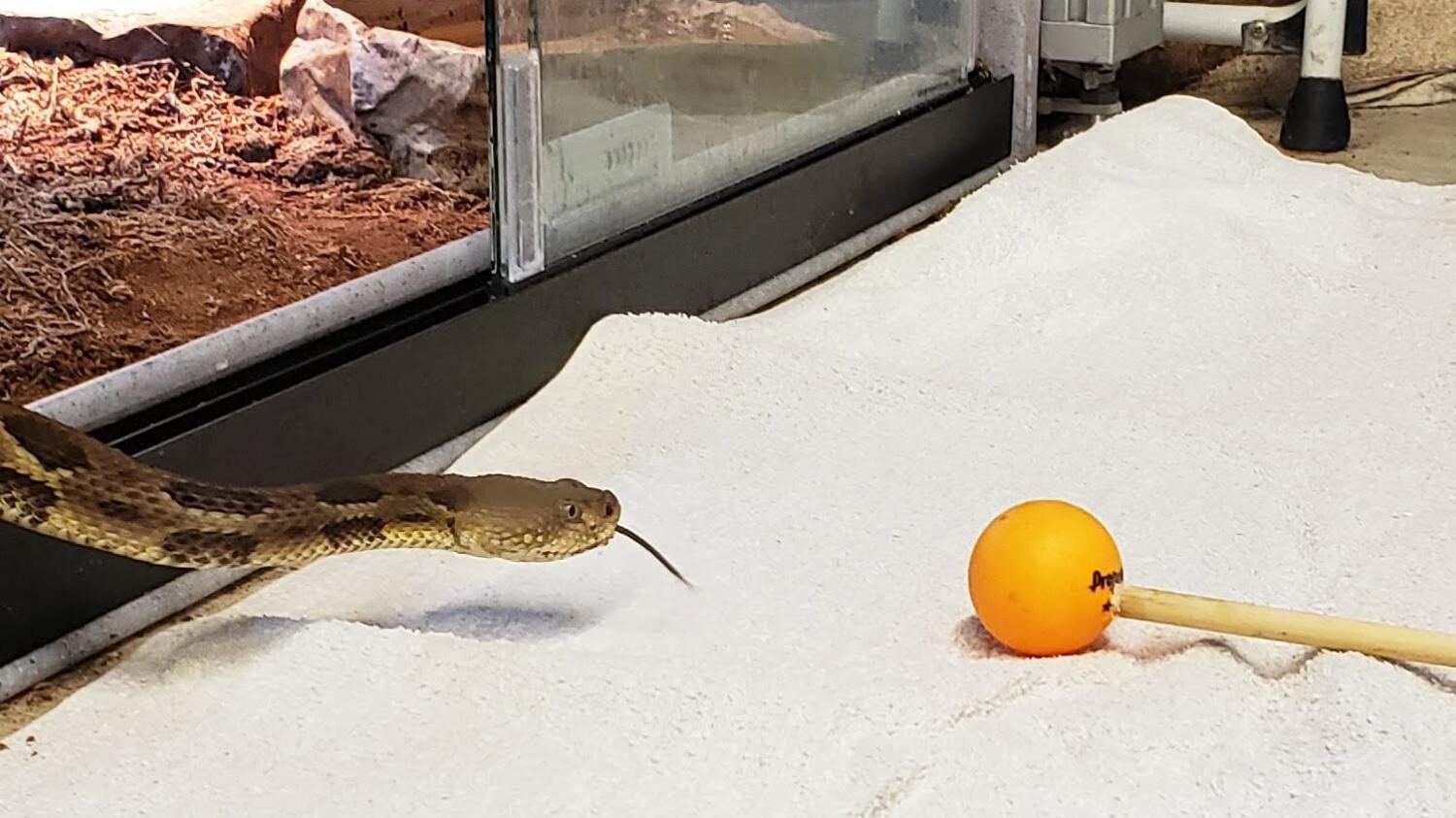
Animal trainers at the Shaver’s Creek Environmental Center at Penn State have designed an unprecedented interactive training program for venomous snakes that they hope will improve the lives of both visitors and the center’s resident reptiles.
Joe Whitehead, coordinator of the amphibian and reptile program at Shaver’s Creek, and his co-author, Meredith Bashaw of Franklin & Marshall College, have won the 2022 Susan D. Chan Author of the Year award for their article titled “Can You Teach an Old Snake New Tricks? Transitioning from traditional management to choice and control training with Viperid snakes.”
The article appeared in Animal Keepers’ Forum, the journal of the American Association of Zookeepers, and also was named “Paper of the Year” after being presented by Whitehead and Shannan Davidow, the animal care shift leader at Shaver’s Creek, at the association’s conference in Toronto this month.
Venomous snakes in zoo settings have traditionally been handled in a hands-off manner, with little interaction between keeper and animal, Whitehead said. But Whitehead said that when he saw other animals at Shaver’s Creek, such as raptors, benefiting from positive reinforcement training, “We wanted to see if we would see that same benefits with our reptiles and particularly our venomous snakes.”
Three venomous snakes are native to Pennsylvania: the Eastern massasauga rattlesnake, the timber rattlesnake and the copperhead. Shaver’s Creek is home to three rattlesnakes and a copperhead.
The Shaver’s Creek staff succeeded in “target training” the snakes, who learned that if they followed a ball at the end of a dowel rod, they would be rewarded with food, Whitehead said.
“Instead of using hooks to make them go to a part of the enclosure so I can clean it, I can use the target to ask them to go where I want them to go,” he said. “I can use that target to ask them to come out of their enclosure, get on the scale, get in a travel bin, whatever we need” — all without touching the snakes.
That’s safer for keepers, Whitehead said, and also gives the snakes a “voice” in what’s being done with them.
“If they aren’t interested in performing the requested behavior, we let that be their decision and we’ll just change our schedule around it,” he said. “We’re giving them choice and control — to be a participant rather than just forcing them out.”
“As far as we know, if we’re not the first, we’re one of the first places to train rattlesnakes formally, in a zoo setting,” he said. “There’s not really a training manual. We were making all this up as we went.”
The paper outlines what worked and didn’t work in the training process. For example, staff members experimented with how small they could cut up food before the snakes would lose interest. They learned, Whitehead said, that “they will eat pieces of prey that are basically as wide as their mouth. But if it’s smaller than that, they don’t always want it.”
Shaver’s Creek and Franklin & Marshall are now doing research on how the training benefits the snakes. Preliminary results show it has reduced stress behaviors such as rattling and striking out, Whitehead said.
Whitehead hopes the new approach will help students and visitors at Shaver’s Creek feel more comfortable around venomous snakes.
“We tend to view them as sticks of dynamite — if you find one, you’re immediately in danger,” he said. “People don’t know that rattlesnakes can learn, that they can be taught, or that they can have this kind of interaction with people. We don’t give them credit for how smart they really are.
“What we’ve been able to show with this training is that these are thinking animals that are making decisions and responding to you and how you’re treating them. They’re not trying to harm you. If you’re being respectful of them, and conscious of them being in the area, you’re able to live safely with them.”
Whitehead wants more people to know they can have safe interactions with venomous snakes from a distance, and he hopes that translates to when they see a rattlesnake on the trail.
“They’re not going to chase you,” he said. “They’re not going to try to bother you. And you can take a moment to enjoy seeing an animal that really isn’t found in a lot of other places.”

